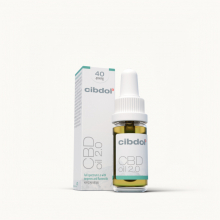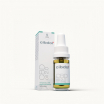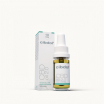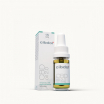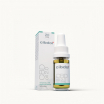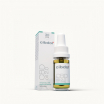The History Of CBD (Cannabidiol)
Last updated:
Published:
Cannabidiol (CBD) has become wildly popular over the past few years. It seems like everyone is using products infused with this cannabis compound to help ease anxiety, pain, and sleep issues. But CBD actually has a long and fascinating history that paved the way for its rise in mainstream acceptance.
Contents:
- What Exactly Is CBD?
- CBD’s Origins In Ancient History
- The Earliest Direct References To Cannabis Compounds
- CBD Identified As A Distinct Cannabinoid
- Government Regulation And Restriction
- CBD Research Picks Up Speed
- CBD Research Expands In The 1970s-1980s
- The First CBD-Based Medication Hits Pharmacy Shelves
- CBD Research Accelerates In The 1990s And Early 2000s
- Legalization Sparks CBD Growth In The 2010s
- The FDA Cracks Down On Unfounded CBD Claims
- The Future Of CBD
- A Summary Of CBD History
- Frequently Asked Questions on the History of CBD
- When was CBD first discovered?
- How did early cultures use cannabis plants containing CBD?
- When did CBD research begin?
- When was the first CBD medication approved?
- What sparked recent interest and acceptance of CBD?
- How did scientists discover the human endocannabinoid system?
- How has CBD been used in recent history?
- Is CBD fully legal and unregulated now?
- What changes allowed expansion of the CBD market?
- What risks are still associated with CBD use?
- What might the future hold for CBD?
Let's explore the history of CBD and how we got to where we are today with this intriguing botanical.
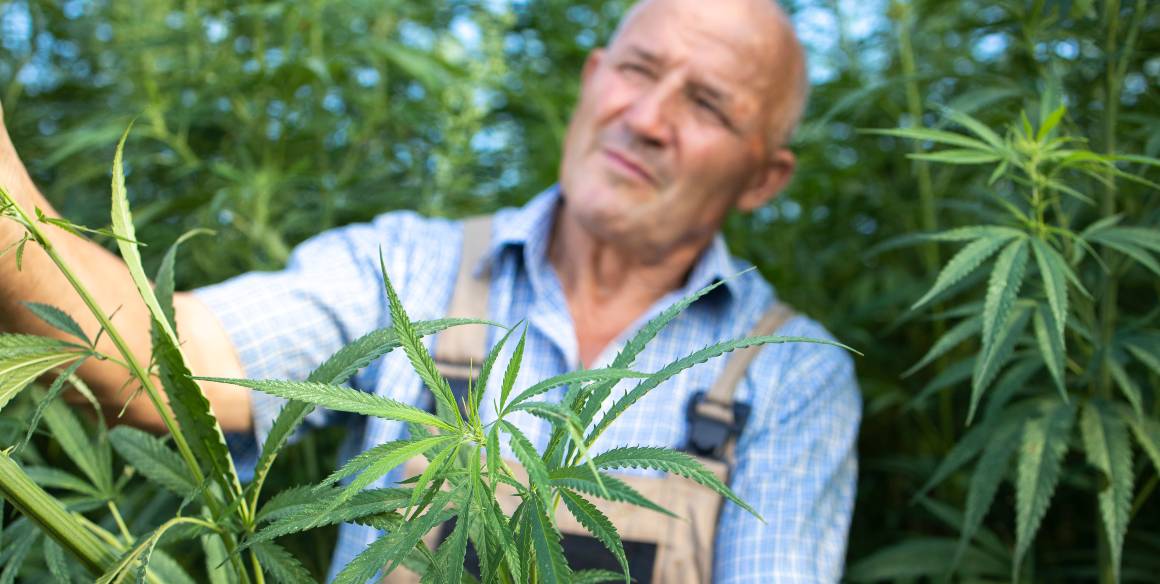
What Exactly Is CBD?
Before we dive into the origins of cannabidiol, let’s quickly cover the basics. CBD is one of over 100 active compounds found in the cannabis plant called cannabinoids. The most well-known cannabinoid is THC, which causes the “high” associated with marijuana. Unlike THC, CBD is non-intoxicating.
CBD can be extracted from both marijuana and hemp plants. But most CBD on today’s market comes from industrial hemp due to its naturally high CBD levels and low THC content.
Now that we have a general understanding of what CBD is, we can take a look back at the long and fascinating journey behind this cannabinoid.
CBD’s Origins In Ancient History
The use of cannabis for spiritual, healing, and recreational purposes dates back thousands of years across many cultures. However, CBD was not directly discovered and identified until fairly recently.
Ancient texts from Asia first reference using cannabis for medical purposes around 1500 BC. At this early time, cannabis plants would have contained both CBD and low levels of THC. But healers of this era had no knowledge of the specific compounds in the plant. They simply used various parts of cannabis for a variety of ailments.
Around 200 AD, ancient doctors in China and Taiwan used cannabis as an anesthetic. Texts from this time also note using cannabis for constipation, rheumatic pain, female reproductive issues, and malaria.
The Earliest Direct References To Cannabis Compounds
The first direct mention of compounds that we now know as CBD comes from a couple of notable sources around the mid-1800s.
- In 1839, Irish doctor William Brooke O’Shaughnessy published findings about the therapeutic effects of cannabis after performing experiments in labs. He did not identify specific cannabinoids but found cannabis extracts were effective analgesics and muscle relaxants.
- In 1850, a review published in the American Journal of Pharmacy and Chemistry also discussed the pain-relieving effects of cannabis. This shows an early awareness of the medicinal benefits of compounds in the cannabis plant.
CBD Identified As A Distinct Cannabinoid
In 1940, CBD was isolated as a distinct cannabinoid for the first time by researchers Adams, Todd, and Wolff. They successfully extracted CBD crystals from a cannabis sample after extensive testing.
Their groundbreaking work finally distinguished CBD as its own unique compound. This discovery paved the way for more in-depth research into the potential therapeutic uses of CBD.
Government Regulation And Restriction
Unfortunately, cannabis research and usage faced government restrictions around the same time as CBD’s first isolation as a compound.
In 1937, the Marihuana Tax Act was passed in the United States, heavily restricting all uses of cannabis. This made CBD research nearly impossible for decades in the US. It also contributed to misconceptions equating CBD with the intoxicating effects of THC.
CBD Research Picks Up Speed
In the 1960s, Israeli scientist Dr. Raphael Mechoulam made monumental discoveries about cannabinoids. His work significantly advanced our understanding of THC and CBD.
Key findings by Mechoulam included:
- The identification of THC as the main psychoactive compound in cannabis
- The mapping of the chemical structure of CBD
- Discovery of the human endocannabinoid system and how cannabinoids interact with it
Mechoulam’s pioneering work laid the foundation for future cannabis research. It also sparked greater interest in studying CBD’s medicinal properties more closely.
CBD Research Expands In The 1970s-1980s
Studies on using CBD for epilepsy and anxiety began popping up in the 1970s and 1980s.
One key study in 1980 by Mechoulam and Carlini found that CBD could reduce seizures in animals. This opened the doors to eventually using CBD for refractory epilepsy.
Additional studies during this era also suggested CBD could help treat anxiety without causing sedative effects. This helped distinguish CBD further from THC.
However, cannabis research was still heavily limited during this time period. Most progress was made in international studies, not United States government approved research.
The First CBD-Based Medication Hits Pharmacy Shelves
In 1985, the very first CBD-based pharmaceutical medication gained approval in the United Kingdom. Manufactured by GW Pharmaceuticals, the drug was called Sativex and administered via an oral spray.
Sativex was prescribed to treat spasticity caused by multiple sclerosis. It contained a 1:1 ratio of CBD and THC.
This was a major milestone for CBD legitimacy in western medicine. It paved the way for future CBD-based drugs.
CBD Research Accelerates In The 1990s And Early 2000s
Progress for CBD research greatly expanded in the 1990s due to discoveries about the human endocannabinoid system.
In the early 1990s, researchers identified endocannabinoid receptors located throughout the body. This system is now known to regulate key bodily functions like mood, appetite, immune response, sleep, pain perception, and more.
Understanding how cannabinoids like CBD interact with this system finally unlocked its therapeutic potential.
This accelerated research investigating CBD for numerous medical conditions in the late 1990s and 2000s.
Legalization Sparks CBD Growth In The 2010s
The most rapid increase in CBD interest and usage came within the past decade.
A few key events in the 2010s helped launch CBD into mainstream popularity:
- Passing of state laws legalizing medical and recreational cannabis
- Removal of hemp restrictions in the 2018 US Farm Bill
- FDA approval of the CBD-based drug Epidiolex in 2018
- Proliferation of CBD wellness companies and hemp-derived CBD products
These developments led to a massive rise in CBD sales and product availability. By 2020, the CBD market hit $4.7 billion in sales and is still rapidly growing today.
The FDA Cracks Down On Unfounded CBD Claims
While the CBD market rapidly expanded, it also became filled with lots of questionable health claims about CBD benefits. The FDA eventually had to step in and provide regulations.
In 2020-2021, the FDA sent warning letters to numerous CBD companies about unsupported health benefit claims. They also clarified CBD cannot legally be added to food, drinks, and dietary supplements.
This regulatory oversight by the FDA aims to guide responsible and compliant marketing as CBD continues to evolve.
The Future Of CBD
What’s next for CBD? Here are some possible developments to watch for:
- More clinical research on CBD for physical and mental health
- Additional FDA approved CBD medications
- Standardized CBD dosing guidelines
- New CBD product categories like inhalables or topicals
- Increased state-by-state legalization of cannabis
The story of CBD is still being written. But its origins and increasing popularity show much promise for CBD’s therapeutic potential as regulations and research progress.
A Summary Of CBD History
- Cannabis has been used medicinally for millennia, but CBD was not identified until the 1800s
- CBD was isolated as a distinct compound in 1940
- Early research into medical uses began in the 1970s-1980s
- The first CBD drug was approved in the UK in 1985
- CBD research rapidly expanded in the 1990s once the human endocannabinoid system was discovered
- Legalization sparked explosive mainstream popularity starting in the 2010s
- The FDA is still regulating marketing claims as CBD research continues evolving
Understanding the origins and chronology of CBD helps appreciate how far we’ve come. After languishing in prohibition for decades, CBD is finally becoming recognized for its broad therapeutic promise.
Frequently Asked Questions on the History of CBD
When was CBD first discovered?
The first direct references to CBD appeared in the 1800s. CBD was definitively identified as a distinct compound when it was successfully isolated in 1940.
How did early cultures use cannabis plants containing CBD?
Cannabis plants have been used medicinally for thousands of years. Ancient Chinese and Taiwanese texts referenced using cannabis for medical uses as early as 1500 BC. However, specific knowledge of compounds like CBD had not yet been uncovered.
When did CBD research begin?
In the 1940s and 1950s, early studies on CBD and cannabis were limited by restrictions. More in-depth CBD research picked up in the 1960s and expanded rapidly since the 1990s.
When was the first CBD medication approved?
In 1985, a CBD+THC oral spray called Sativex was approved in the UK for treating multiple sclerosis spasticity, marking the first approved cannabis-derived drug.
What sparked recent interest and acceptance of CBD?
Increased legalization of cannabis starting in the 2010s significantly accelerated CBD sales, product availability, and mainstream popularity.
How did scientists discover the human endocannabinoid system?
In the 1990s, researchers identified endocannabinoid receptors located throughout the human body that interact with compounds like CBD and regulate key functions. This revelation unlocked CBD's therapeutic potential.
How has CBD been used in recent history?
Modern usage of CBD includes oral supplements, topicals, edibles, tinctures, vape oils, pharmaceuticals, and more. Scientists are still researching CBD's effects on various physical and mental health conditions.
Is CBD fully legal and unregulated now?
While hemp-derived CBD is legal thanks to the 2018 Farm Bill, the FDA still provides regulatory oversight on marketing claims and product categories. More regulations are likely as CBD research continues.
What changes allowed expansion of the CBD market?
Reduced hemp restrictions, increased legalization of cannabis products, proliferation of hemp-derived CBD product companies, and FDA approval of Epidiolex in 2018 rapidly grew the CBD market.
What risks are still associated with CBD use?
While generally considered safe, CBD may cause side effects like diarrhea, fatigue, and irritability in some. CBD products are also not well-standardized or regulated, so quality and doses vary widely. More research is needed.
What might the future hold for CBD?
The future may bring standardized dosing guidelines, more FDA-approved CBD medications, increased state legalization, development of new CBD product categories, and expanded research on medical applications.









